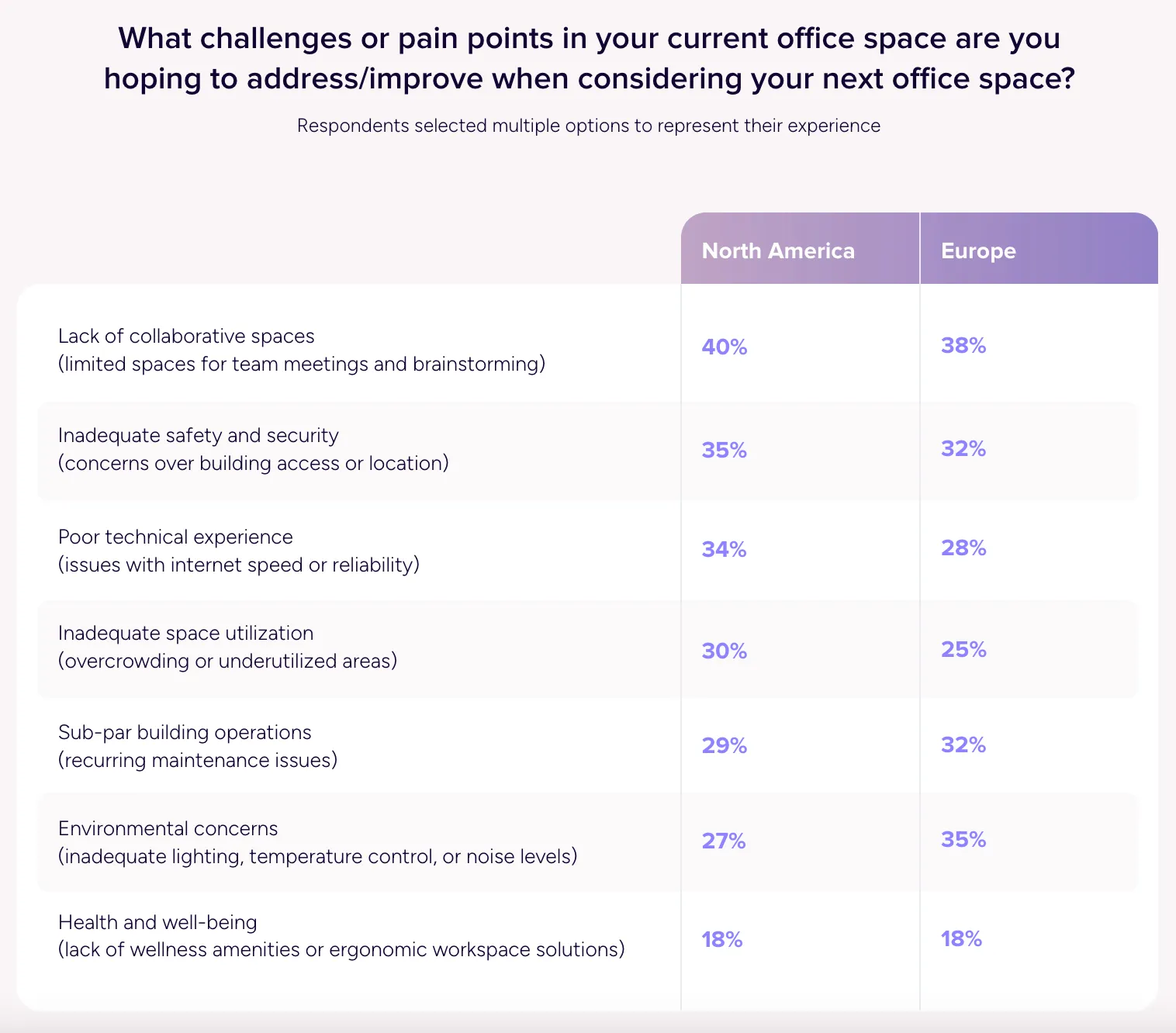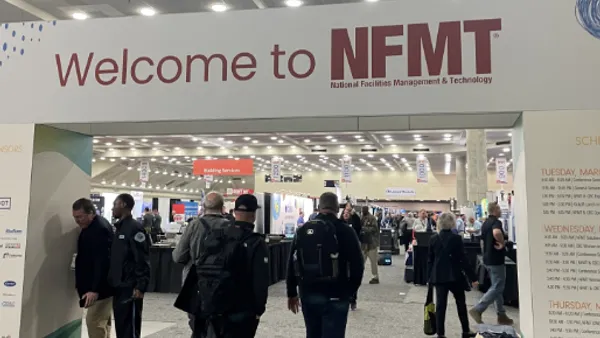Dive Brief:
- Thirty-one percent of companies believe their office is either too big or too small, according to a global workplace report from VTS.
- While a majority of global companies say their current space fits their needs, VTS says there is a “clear demand for expanded space,” with 13% of companies saying there is insufficient collaborative space outside the workplace suite.
- VTS stressed the importance of ongoing communication with tenant customers to understand their specific requirements. “All workplace challenges are solvable, but not in a vacuum,” the report said.
Dive Insight:
The VTS report predicts a strong return-to-office push in 2024. It found that 62% of global companies are currently executing a hybrid work strategy, with 38% requiring workers back in the office full time and 52% requiring employees to come into the office one to four days a week. Only 10% of companies are taking a remote-first or office-optional approach, the report states, pointing to collaboration, community and productivity as the primary drivers in North America’s push for in-office attendance.
Compared with six months ago, 25% of North American respondents are mandating more time in the office, with 33% of companies “encouraging” respondents to stay on-site longer and 35% holding consistent workplace strategies over that time. Currently, 47% of North American talent is required to be in office five days per week, compared with just 29% in Europe, VTS said.
A lack of collaborative spaces tops the list of pain points for many users of North American office spaces, with 40% of respondents citing limited space for team meetings and brainstorming sessions. Inadequate safety and security come next, with 35% expressing concerns over building access or location. Thirty-four percent of respondents reported that poor technical experience is another challenge they are grappling with, while 30% and 29% pointed to inadequate space utilization and recurring maintenance issues, respectively.

Twenty-seven percent of respondents cited environmental concerns, such as inadequate lighting, temperature controls or noise levels, and 18% listed a lack of wellness amenities or ergonomic workplace solutions as a pain point for current office space, VTS said.
Looking ahead, 21% of respondents in North America said they plan to mandate more time in the office, while 37% said they intend to keep consistent workplace strategies in the next six months. While it is “undeniable that companies are leaning toward more in-office time,” organizations are increasingly opting to encourage employees to return to the office through “softer encouragement,” VTS said.
Building owners should be ready to offer new flex spaces to meet evolving tenant needs as organizations encourage more time on-site. However, tenants with too much space are “an obvious expiration risk,” VTS said, noting that it is essential for owners and operators to understand workplace strategies, regardless of whether tenants plan to boost in-office attendance or cut their office footprint.
“Polling tenants and gathering insights to understand their utilization (while keeping the context of your broader relationship with the tenant company in mind) will help you create the right renewal strategy for each tenant,” the report said.
The report emphasized that while safety, space utilization and ESG considerations pose significant obstacles for tenants on a global scale, they do not challenge organizations uniformly.
When asked about where employees work outside of the primary office, 58% of respondents said their employees worked from home during the week and 53% reported that their staff worked from a company-provided flex space. Thirty-four percent of respondents said employees worked from shared spaces within the office building but outside the primary office suite, and 21% stated that a coffee shop was the primary location of choice for their teams.
VTS says it will readjust its benchmarks as 58% of North American companies plan to encourage or mandate more time in the office over the next six months. Three additional sections of the report will be released in the coming months, it said.














